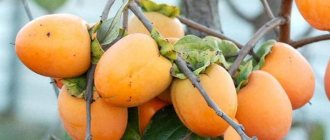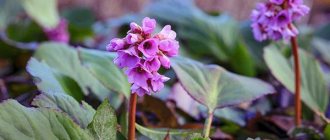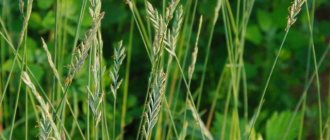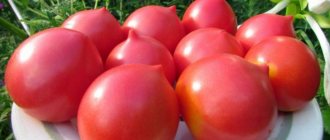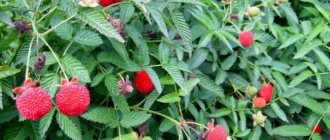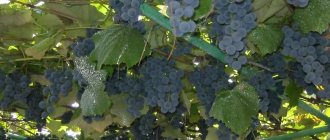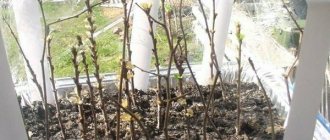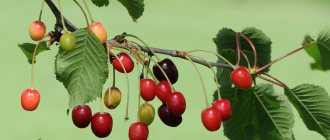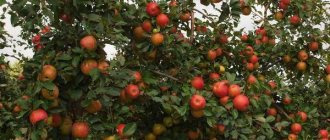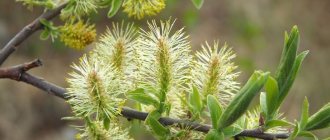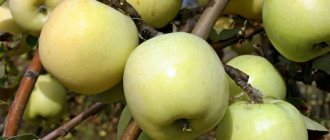Description of the Peach fruit tree
The plant belongs to the genus Plum, subfamily Rosaceae. There are three main varieties: Nectarine (Prunus persica var. nucipersica), Common peach (Prunus persica) and peach.
The size of a peach tree depends on the type and variety.
On average, a tree grows no more than 6-8 meters. The crown is spreading and branched. The leaves are lanceolate in shape with a serrated edge. The shape of the fruit varies depending on the variety and can be round, flattened or slightly elongated. The skin is often velvety. The bone has a pointed tip, has dimples, and shallow grooves along the entire surface. The peach blossom tree in April is profusely decorated with single flowers, with five soft pink petals. The way the peach blooms immediately catches the eye of anyone who plants this crop in their dacha or garden.
A young plant begins to bear fruit 2-4 years after planting. The fruiting time of an adult tree is about 15 years.
You can also read the article “Apricot in the garden”
Where do peaches grow in Russia?
Peach trees are actively cultivated in the south in regions with warm winters: in the Krasnodar Territory, Dagestan, Crimea and the Caucasus.
Those regions where the air temperature does not drop below +24 oC from June to September are suitable for growing this crop. And in winter – below -10 oC. At a temperature of -25 oC the tree dies.
However, gardeners also grow peaches in the Moscow region. In this case, the optimal time for planting is the beginning of spring. Prune the plant back to a shrub shape to achieve a higher yield.
Peaches growing in central Russia must be covered for the winter using air structures made of polystyrene foam or expanded polystyrene.
For growing peaches in the Moscow region, Moscow and central Russia, varieties with high winter hardiness are suitable:
- Kyiv Early;
- Red-cheeked;
- Cardinal;
- Redhaven;
- Collins;
- Kremlevsky.
Peach tree: planting rules
The plant can be planted in open ground in spring and autumn. The optimal planting time depends on the climate zone. If spring and summer in the region are too hot, then the procedure is recommended to be carried out in the fall. In temperate climates, planting is carried out in the spring.
When choosing a landing site, consider the following:
- the area should be well lit and protected from strong gusts of wind;
- the distance from other plantings must be at least 3 meters;
- if you plan to plant trees in rows, then make a distance of at least 5 meters;
- To protect trees from drafts, you should use a fence; you can also plant crops next to buildings, but make sure that they do not create a shadow on the plants.
Before planting the seedling, melons, nightshades, alfalfa, and strawberries should not have grown on this soil. Otherwise, there is a high probability of the tree becoming infected with verticillium.
What soil is preferable for planting Peach seedlings?
The soil is preferably nutritious, not heavy, not saline. The best option would be loamy soils or low-acid chernozems. Please also keep in mind that the peach tree does not like excess moisture, so it is important that the groundwater level in the area is no more than 3 m lower than the root system.
Which seedlings to choose for planting
For planting, it is recommended to choose annual seedlings; they quickly adapt to the terrain and have a higher survival rate. Seedlings purchased from a nursery must be carefully and carefully examined for damage and disease. It is better not to buy seedlings with visible damage; their survival rate is quite small.
Well preparation
The pit is prepared a week before planting. Mineral fertilizers and ash are added to the prepared soil. The seedling is planted on an earthen mound formed in a hole, then the rhizome is carefully straightened. The mound is created from the top layer of soil mixed with fertilizers. After which the hole is filled with soil, watered, and mulched with a thick layer of manure (about 10 cm). It is imperative to ensure that the manure does not come into contact with the trunk of the seedling.
Which tree is best to graft a peach on? Peach takes root well on plum, cherry plum, and apricot. The branch takes root especially well on wild apricot. Growing up, it is highly resistant to low temperatures and certain diseases.
The proximity of a fruit tree to other crops
To get a beautiful and healthy tree, you should also choose the right neighbors. Remember that trees may compete with each other for moisture and light. Therefore, it is not recommended to plant peaches next to Apricots, Walnuts, Cherries, Sweet Cherries and Apple Trees. It is also important to take into account what crops were growing before the tree was planted on the site. You should not plant such a fruit tree after strawberries, potatoes, peppers, and tomatoes. Alfalfa and Clover are considered undesirable predecessors; they can worsen the development of garden crops.
Trimming and shaping
It is important to remember that peach is painful when cut. The cut is made at one time, using a tool treated with alcohol, and then the cut itself is treated with a garden varnish.
Spring pruning
The optimal time for spring pruning must be chosen between swelling and flowering of the buds. Spring pruning does not have such a detrimental effect on the plant as winter pruning. Because in the warm season the plant has a greater ability to fight diseases and injuries.
Shortening is carried out in order to form a beautiful crown, convenient for care and harvesting. Thinning is suitable for mature trees with dense branches.
Principles of pruning:
- It is important to remember the first rule: those branches that gained growth last year will be fruitful.
- The principle of substitution works here: a twig with two shoots, the first shoot should bear fruit this year, it is preserved, and the second shoot, which will bear fruit next year, is removed.
This method of pruning gives a good harvest and inhibits the excessive growth of young branches.
If you can’t see which branch to remove before flowering, you can use this option during flowering. A branch on which too many flowers grow will, accordingly, bear small fruits. This branch is removed and the cut is processed.
Today, Free Spindle type formation has become widespread. In the fifth year, the height of the seedling reaches 3 meters, and a tree grows in the shape of a Christmas tree.
The work sequence diagram looks like this:
- In the lower tier of branches, 4 main frame branches are left.
- 5 branches are left in the second tier.
- All branches are cut by one third. They remove all the frozen and sick ones.
Pruning in autumn
Autumn pruning of peach is done after harvesting, but before the arrival of the first frost.
The scheme is like this:
- The number of branches on a tree should not be more than 80.
- All fruit-bearing branches are pruned.
- Remove dry and bacteria-affected branches.
- If winters are harsh, fragile branches should be removed.
Peach pruning scheme by year
How to care for a Peach tree
Plant care depends on the season. Let's look at the basic procedures that need to be carried out, depending on the time of year.
How to care for Peach in spring
It is recommended to start caring for a fruit tree in mid-April. Initially, spraying will have to be carried out to neutralize the appearance of aphids and other pests. For processing, Bordeaux mixture is used, the procedure is carried out on the swelling buds.
Then the pink bud is pruned for replacement, as well as treated with antifungal compounds. At the end of flowering, the trees will have to be treated with complex compounds against pests and various diseases. If the winter season turns out to be snowless, and the spring is without rain, then in May you will have to carry out thorough watering.
Rules for caring for a tree in the summer season
Once the excess ovary is finished, the fruit load will have to be distributed among the Prunus crop. On a shoot that bears fruit, there should be one ovary 8-10 cm in length. Any excess ovaries need to be plucked out. In the summer, the site will need to be regularly watered, especially if temperatures have been high for a long time. But irrigation is allowed only after the stone has hardened. Otherwise, the fruits may crack.
The tree is regularly inspected for pests and diseases. Experts also recommend applying 2-3 foliar fertilizers (preferably potash) before harvesting. This feeding is combined with spraying of plantings against pests and diseases. A month before harvest, fruit crops are well watered. This will allow the fruit to become another 1/3 larger.
Autumn care rules
At the end of August, beginning of September, flower buds are laid and formed. Keep in mind that their level of frost resistance largely depends on the moisture at this time. Therefore, during this period, it is as important as possible to irrigate the bed with crops.
If the plants are often damaged by fungal diseases, then in August you will need to spray with Bordeaux mixture (three percent). After all the leaves have fallen off, they will need to be treated with urea or copper sulfate.
Also, in the autumn season, mineral fertilizers and organic matter must be applied. Thanks to this solution, the tree will absorb nutritional components until spring arrives.
Preparing for winter
As soon as the air temperature begins to decrease, the soil will need to be dug up. Plants are treated with fungicides to eliminate the appearance of pests. The area under the crown of the crop is mulched using sawdust or old leaves. The tree trunk must be wrapped with burlap, and the crown with agro-wool or paper.
Features of watering
The total number of waterings for trees depends on weather conditions. On average, irrigation of late-ripening varieties is carried out 5-6 times per season, and early-ripening varieties - 2-3. Under one tree you will need to apply up to 50 liters of water at a time. The optimal time for such a procedure is considered to be either early in the morning or in the evening after sunset.
Pruning Peach Tree
Pruning is carried out in early spring, before the buds begin to bloom. Before pruning peach trees, wait until buds form, but do not allow them to fully bloom. During this period, the fruit will most easily tolerate pruning.
The branches are pruned to form a crown, and a cleansing and health-improving cleansing is also performed.
Recommended pruning methods:
- Remove dead, diseased and damaged branches. Sterilize pruning equipment in alcohol or a mixture of 1 part chlorine bleach and 5 parts water after cutting diseased branches.
- Trim the weaker of two branches that cross each other.
- Prune a young tree so that its main branches are 30 - 45 cm apart and evenly distributed around the tree.
- Trim branches from the bottom third of the tree until the lowest branch is at your desired height.
- Periodically thin out a mature flowering peach tree by cutting off a few branches. This encourages vigorous new growth and subsequent flowering. Cut selected branches back to an outer bud or side branch. To carry out the formation of a peach tree in the first year, the height of the shoots is cut off, which allows the growth of lateral branches. Annual pruning should form a cup-shaped crown that is convenient for harvesting.
To form the crown in the first year, the height of the shoots is cut off, which allows the growth of lateral branches. Annual pruning should form a cup-shaped crown that is convenient for harvesting.
Basic care recommendations
The tree will delight its owner with a bountiful harvest if it is properly cared for. Gardeners recommend fertilizing peach plants annually in early or mid-spring. Nitrogen fertilizers or ammonium nitrate are perfect for these purposes.
Watering must be done before flowering begins, no later than 10 days. A couple of weeks before the expected fruit harvest, it is highly undesirable to moisten the soil; this may negatively affect the quality of the harvest.
It is advisable to treat a specific disease using a separate chemical, while not forgetting to use protection: gloves, a mask, closed clothing.
Perhaps these are the main recommendations on how to grow a peach. Proper care is the key to growing a tree.
Basic methods of propagation of Peach
The main methods of propagation: cuttings, grafting, seeds. When thinking about how to grow a tree from a peach pit, remember that most of the properties of the mother plant will be lost with this method of propagation. Therefore, it is recommended to purchase seedlings from nurseries or get vaccinated. But we will consider all methods in as much detail as possible.
How to grow a fruit-bearing tree from a peach seed
It is necessary to understand that growing peaches from pits has both disadvantages and advantages:
- trees grown from seed have a longer lifespan than grafted plants;
- such crops are much more resistant to frost and drought, and various diseases.
To engage in such a process, you should find a suitable area for landing. Choose areas with good lighting and protection from drafts. It is recommended to plant seeds before winter - best in October or November. This will allow the seed material to undergo natural stratification.
Photos of different varieties of peach seeds
Before planting, the seeds must be dried and placed in the shade. Having opened them, take out the kernels from there, and make a trench in the area where nutritious loose soil is placed. The kernels are planted in the prepared hole at a distance of 25-30 cm. Planting depth is up to 6 cm. Then the seeds are planted and the area is watered.
Be prepared for the fact that seedlings will not appear right away. First, a root forms in them, and only then a sprout. Therefore, to fill a trench, it is better to use soft and loose soil. At first, the crops are watered every day. After the first shoots appear, fertilization is carried out using humus. The leaves can be sprayed with Ridomil or Tiovit.
The seedlings will need to be replanted 3 times. After the plants have up to 10 leaf blades, they are removed from the soil along with a clod of earth. The central roots are carefully cut off, 6 cm lower than the root collar. Then the seedling is placed there, only the soil is compacted well. Be sure to water.
When the seedlings reach a height of 1 meter, they are transplanted again. This procedure is done in the spring, after the start of sap flow. The bushes are dug around the perimeter (at a distance of 30 cm), pulled out and replanted.
When the seedlings are still growing and stronger, they can be planted for the 3rd time.
Vaccination rules
To vaccinate, you need to know which trees Peach is grafted onto. Apricot, Almond, and Quince are considered the best options. Apricot. First, a cutting of the desired variety is prepared, and then it is grafted onto a one-year-old or two-year-old seedling.
Photo of Peach cuttings
The cuttings are harvested in late autumn after the onset of frost. It is recommended to store them in the basement or in the garden. The top of the cuttings will need to be covered with agrofibre, and then wood sawdust should be laid. When it gets warm outside, the cuttings are placed in the refrigerator. The vaccination itself is done in the spring, always before the start of sap flow.
The rootstock can be a fruit tree seedling grown from a seed. Its thickness must be at least 15 mm. The rootstock should be shortened to the desired height, inspecting the bark for smoothness and absence of buds.
How to select seeds for planting
Growing a peach in our climate is not an easy task. The tree is heat-loving and does not tolerate extremely low temperatures. Owners of personal plots and summer cottages most often grow peaches from stones. But here you need to understand that the exact variety that you like so much is unlikely to grow. The likelihood of a seedling repeating a similar fruit is extremely low.
It is better to sow the seeds immediately, without allowing them to dry out. Plant in the area of the site that is maximally protected from cold winds and drafts.
Experienced gardeners recommend sowing seeds in the cold season, approximately in November.
What work needs to be done in the fall to prepare fruit trees for winter
Planting and replanting trees in autumn: recommendations from experienced gardeners
What are the benefits of pomegranate for health and immunity?
Fertile soil is placed in the dug trench, the seeds are placed to a depth of 7 cm. Here it is important to take into account the distance between the seedlings, ideally equal to 20 cm from each other. After the main work, the planting site is generously filled with water and insulated with humus and sawdust for the cold season.
Common diseases and pests of the Peach tree
This fruit is susceptible to a large number of diseases. Let's look at the most common problems that gardeners face.
Why do Peach trees have curled or twisted leaves?
Often this disease affects a tree if the spring has been wet and protracted. Blisters of a pale red hue appear on the leaves, and the foliage becomes deformed. The blisters increase in size, swell, and a whitish coating appears. Subsequently, the foliage falls and the shoots become deformed. Fighting such a disease is a labor-intensive, protracted process. In early spring and autumn, the fruit is sprayed with 3% Bordeaux mixture. Damaged shoots must be cut off and burned. Fallen leaves must also be burned in the autumn.
How to treat a peach tree against aphids
Aphids are a common pest that attacks fruit, reduces its immunity, and contributes to the appearance of sooty fungus. Small affected areas can be treated with a solution of laundry soap. In case of extensive damage, it is recommended to use products such as Karboforos. Treatment of the affected areas is carried out several times with an interval of half a month.
As a preventative measure, the fruit must be processed annually (spring, autumn). How to spray peach trees depends on the gardener’s preferences. A large number of drugs have now been developed that effectively fight infections and pests and are safe for people and the environment.
Fighting scale insects
Scale insects are a dangerous pest that damages the above-ground parts of the tree. A day after the parasite attack, red spots appear on the surface of the bark and fruit. If you don’t start fighting pests in time, you can get complete deformation of the tree and fruits, and leaves falling off. To destroy parasites, use “Aktara”, “Inta-vir”, “Aktellik” or “Mospilan”. Traditional methods include onion water or pepper tincture.
Elimination of plum moth
Oriental and plum stalk are small butterflies that hide in the bark of peaches for the winter.
In spring, caterpillars damage plant shoots and fruit seeds. To exterminate such parasites, it is recommended to use insecticides such as Durban, Karbofos, Metafos, Chlorophos.
Fighting powdery mildew
If you find a felt white coating on the underside of leaves and fruits, think about treating the tree for powdery mildew. Such trees begin to develop worse, their stems partially die. These signs are most pronounced at the end of April, beginning of May. During the hot season, diseases reach their peak. For processing, sulfur preparations (PSK), as well as Topaz and Topsin-M are used.
If treatment is needed during the period of fruit ripening and harvesting, give preference to biological products - Albit, Baktofit, Fitosporin.
How many years does a peach bear fruit?
The lifespan of a peach can reach 30 years, but for such a period you need to take care of the tree. With classical care, the fruiting period can reach 10-16 years. But, if you update the hybrid in a timely manner by pruning and choose a stable rootstock, then the harvest can be harvested over a longer period. To preserve the quality of the fruit, be sure to remove damaged and old branches.
Peach is classified as a persistent hybrid crop that can be grown in central and southern Russia. The fruits of this plant have great taste and energy value. Flowering occurs in early spring and, if all agricultural standards are observed, it can produce a large harvest - at least 20-30 kg from one young tree. The lifespan of the plant is short, but with regular renewal of branches, you can get sweet fruit for up to 30 years.
Which peaches are the most delicious?
When choosing a variety, pay attention to winter hardiness, yield, and the taste of the fruit. Fruits should be juicy, aromatic, with pronounced sweetness. In this regard, it is recommended to pay attention to the following varieties:
- Collins is an early-ripening variety that produces large fruits weighing 150 g. The taste is sweet, with a noticeable pleasant sourness. Productivity is high, so ripe fruits should be harvested on time.
- Kyiv early is a variety for warm southern climates. The fruits are juicy, tasty, medium in size - weighing about 80–100 g. The variety is resistant to all major diseases.
- Redhaven also ripens early. The tree produces large, tasty peaches (weighing 150–170 g). The pulp is juicy and has a pronounced aroma.
- Cardinal - this variety of peach tree produces fruits weighing up to 150 g. The pulp is fragrant, the taste is excellent, and at the tasting it received the maximum score of five points.
- Kremlevsky is another popular variety with good winter hardiness. The tree produces very large peaches weighing 150–200 g.
The Kremlevsky variety produces large, fragrant fruits with an attractive presentation
Peach – spring care
At the beginning of April, peach care begins - the very first thing is to treat the swollen buds from pests and diseases.
To protect against fungi and to prevent leaf curl, peaches are treated with Bordeaux mixture.
(this treatment is carried out at the very beginning of the season on swollen buds; it is prohibited during the growing season).
After flowering, a second treatment against pests and diseases with chemicals is also carried out.
From pests
The most dangerous are spider mites, aphids, scale insects, and codling moths.
Common Peach Diseases
– leaf curl, powdery mildew, gum disease, moniliosis.
After a winter with little snow, it is necessary to water the peach in the spring.
Video - Real Bordeaux mixture
Description and botanical characteristics of the plant
According to the generally accepted botanical classification, peaches belong to perennial plants from the Almond
, family
Rosaceae
. This is a heat-loving plant that loves mild climates. That is why the central and northern regions of India and China are considered to be the birthplace of peach.
Many people wonder whether or not this species can be associated with citrus. In fact, apart from being thermophilic and similar in morphology, these plants have no common features. In addition to this, citrus fruits are typical representatives of the Rutaceae
, to which peach does not belong. What kind of fruit is similar to a peach? Nectarine, as well as all kinds of plum and apricot hybrids, are best suited for this role.
The average peach tree is a tree-like plant with a wide, rounded and spreading crown, of medium density. The height of the plant is within 8 m. The crown of the tree is formed by lanceolate leaves, up to 15–20 cm long. In the places of the veins, some hybrids may exhibit slight pubescence. Their surface is bare, shiny, predominantly green and light green. The leaves grow on outstretched and branched shoots located at an angle of about 45° to the trunk.

